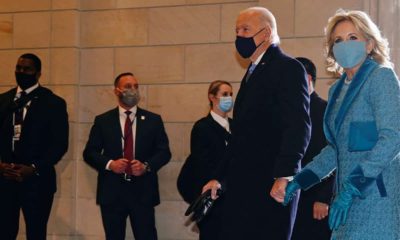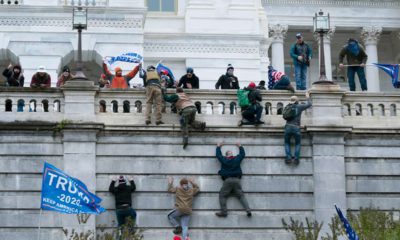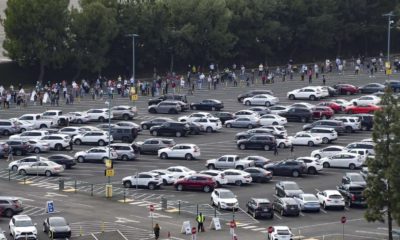Published
5 years agoon
By
CalMatters
The decade dawned on a California that was both “the richest and poorest” state in the nation, in the words of Gov. Gavin Newsom.
Wages for the top 10% of California’s earners had grown three times as fast as those of the bottom 10% of earners since 1980 — all as the cost of buying or renting shelter skyrocketed.

Analysis
By Jackie Botts
CalMatters
Then coronavirus tore across the globe, sickening hundreds of thousands of Californians and shutting down California’s booming service and tourism economies — not once but now twice.
The pandemic has driven a wedge into the fault lines dividing the state’s haves and have nots. The workers facing the highest rates of unemployment are those that already earned the lowest wages. Federal and state lawmakers have cobbled together an enhanced pandemic safety net, but many fall through the cracks. And it will soon shrink back towards its previous size when CARES Act funding for extra unemployment dollars expires July 31.
[rlic_related_post_one]Like a feedback loop, California’s income inequality may also add fuel to the virus’ spread. The second wave of cases now overwhelming the state are increasingly among young Californians and Latinos — the same demographics that make up California’s essential workforce, and disproportionately live in crowded housing.
California’s economic divide is growing, posing weighty policy questions the state – and its residents – will need to grapple with in months and years ahead.


Tulare County Gang Member, Two Fresnans Head to Federal Prison


California Pins Vaccine Hopes on Biden Administration


Newsom Sets New Tone for California, White House Partnership


Capitol Photos, Videos Lead to California Doctor’s Arrest


Vaccine Chaos: Californians Scramble for Shots Amid Mixed Messaging


AP-NORC Poll: Virus, Economy Swamp Other Priorities for US




